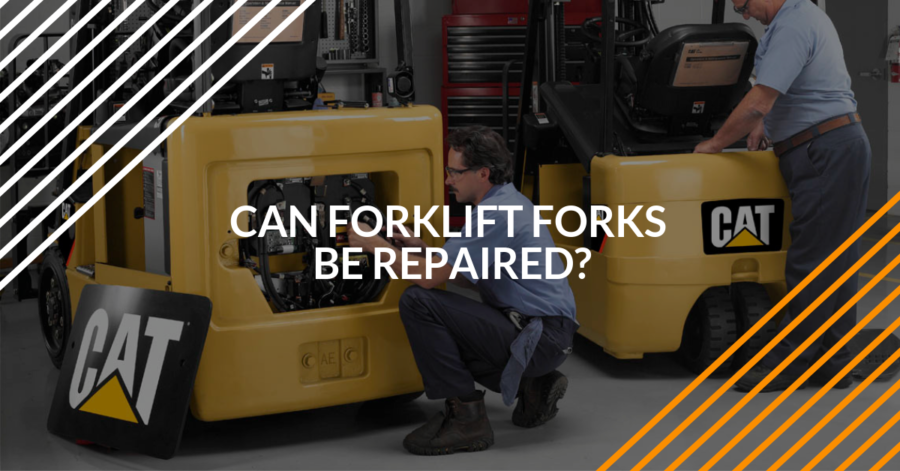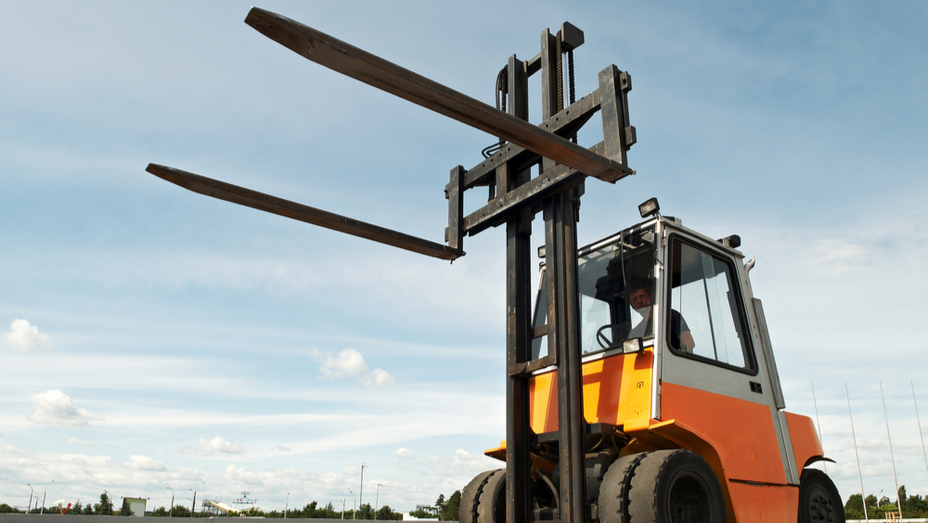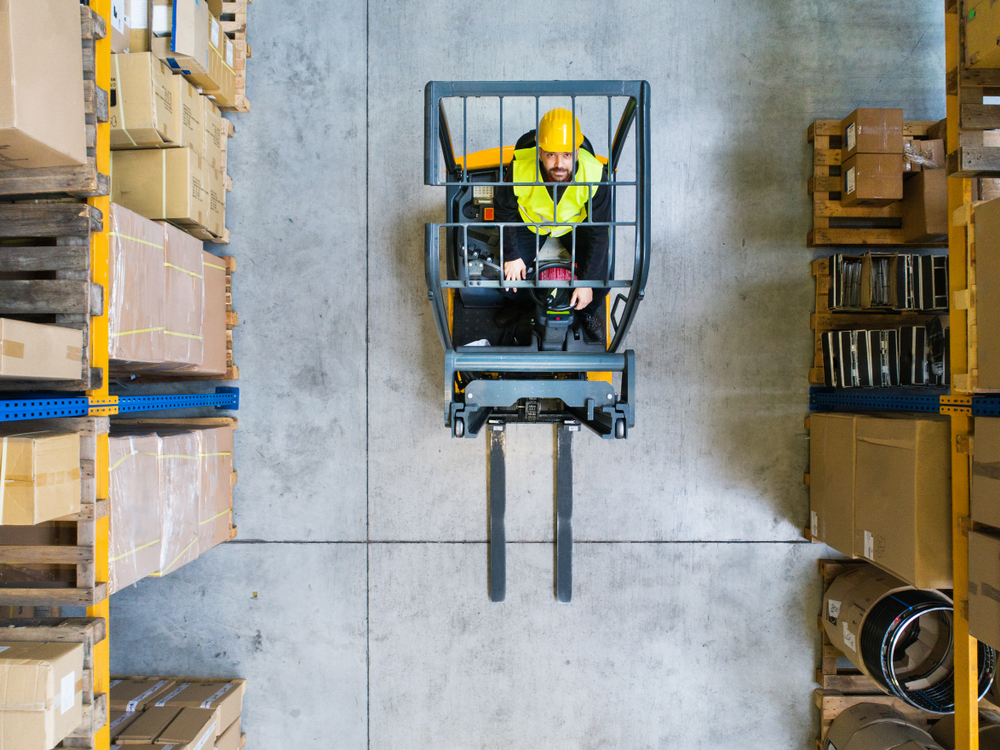Can Forklift Forks Be Repaired?
If you’ve ever seen a forklift, you’ve surely noticed the two metal prongs at the front end of the lift. These are called forklift forks, also known as forklift tynes. They may not look like the forks we eat with. But they serve the same purpose – lifting and moving loads of different sizes from point A to point B. In a warehouse, forklifts are used to lift and move the heavy stuff as well as the light. The same goes for construction sites and dockyards. No matter the location or the weight of the load, forklifts couldn’t do it without their forklift forks.
Tynes and forks are essential for any forklift. Strong and durable, forklift forks are made of high-grade steel. But due to careless operation, accidents or collisions, the forks can become damaged. As with any piece of equipment, they’re also subject to the rigors of daily wear and tear. The state of the forklift forks affects the safety of the entire truck. It also determines whether or not the forklift is safe to use.
This blog will discuss several important topics, including:
 – Basic forklift fork dimension & materials
– Basic forklift fork dimension & materials
– How forklift forks get damaged
– What damage can’t be repaired
– When forklift forks can be repaired
– How to prevent damage to your forklift forks
– How to protect worker safety
– How to repair forklift forks – is this safe?
THE ANATOMY OF FORKLIFT FORKS
Most forklifts are equipped with one of 3 lengths of forklift forks. The standards lengths are:
- 48-inch (most common standard forklift fork length)
- 72-inch
- 96-inch
48 and 72-inch forks are common in warehouses, distribution centers, and other workplaces with regular-sized forklifts. 96-inch forks are more common on heavy-duty outdoor lifts, and for a few specialized options for uncommon loading & unloading.
The vast majority of forks are made of high-grade, stainless steel, although some are manufactured with alloy metals. It’s hard to believe, but some of the first forklifts (from 100 years ago) had wooden forks!
HOW DO FORKLIFT FORKS AND TYNES GET DAMAGED?
Forklift forks can get damaged in a number of ways. For starters, the heel of a forklift fork – the part that curves upward and outward – can become thin over time. This is due to daily operations. In addition, some forklift attachments can also lead to damage if the forklift forks are pushed past their limit on a daily basis.
Other causes of forklift fork damage can include:
– Surpassing the forklift fork weight limit
– Improper maintenance that has bent, welded or drilled holes into the forklift fork
– The forklift forks collide with walls, columns, and other structures
– The forklift fork is used to lift uneven loads
– Excessive heat is applied to the forklift fork
– The forklift forks are used to push or pry things open
– The forklift forks are allowed to hit the ground with force
– Only one fork is used
HOW CAN FORKLIFT FORK DAMAGE BE PREVENTED?
Preventing damage starts with proper maintenance. Companies should refer to the manufacturer’s guidelines for when and how to maintain the forklift forks. Then they should follow a schedule of regular and timely maintenance. Companies should also inspect the forklift forks at least once a year – more often with heavy use.
Workers can prevent forklift fork damage by using the following techniques. These are common sense forklift best practices. But it never hurts to remind workers of their importance.


– Use the forklift forks for lifting only. Again, this is common sense. But forklift operators will often use the forklift forks to push objects around or pry things open. This is especially true if they are under pressure to finish a job. Either way, incorrect use of the forklift forks can damage them and compromise the safety of the forklift.
– Do not exceed the forklift maximum capacity. Even the strongest forklifts can only hold so much weight. The maximum weight limit is the amount the truck can safely hold, and should never be exceeded. Doing so can damage the forklift forks and other parts of the forklift.
– Ease the forklift forks down to the ground. Forklift forks are designed to be lowered at a smooth, moderate rate. Letting loads down too fast or too forcefully can cause cracks in the forklift Bringing a load down too fast can also cause damage to the floor.
– Always use both forklifts. Using only one – even for light loads – can put too much pressure on it. This can easily result in bending or cracking.
If your forks are damaged, and you’re not sure how to repair forklift forks, that’s entirely OK! In fact, without manufacturer approval, it’s not recommended to repair your forks when they’re damaged, as this can compromise safety. Always log any incident involving forklift fork damage. If damage isn’t recorded and injuries or accidents occur, you’re ultimately responsible!
WHEN SHOULDN’T FORKS BE USED?
Safety procedures should include a daily pre-start inspection of the forklift forks and the forklift itself. If you notice any of these signs, the forklift forks should be pulled from use and either repaired or replaced:
✓ Uneven blade or shank
✓ An uneven angle from the blade to the shank
✓ Different forklift fork tip heights
✓ Malfunctioning positioning lock
✓ Wear and tear on the forklift fork blade or shank
✓ Wear on the forklift fork hooks
✓ Illegible forklift fork markings
Any of these conditions can make the forklift unsafe to use. So don’t delay when it comes to repairing or replacing defective forklift forks.
FORKLIFT FORK REPAIR
When forklift fork repairs need to be done, the first step is to get approval from the manufacturer. This isn’t done just as a courtesy to the manufacturer. It’s done because OSHA requires it.
According to OSHA, “Modifications and additions which affect capacity and safe operation shall not be performed by the customer or user without the manufacturer’s prior written approval.” This includes forklift fork repairs. Also, you are not allowed to use replacement forklift parts that are different from the original parts. All new parts must be provided and all repairs approved by the manufacturer before you can begin.
This may seem like a burden to companies needing a quick repair to their forklift forks. However, forklift accidents can cause severe harm to workers, including death. This
OSHA guidelines are designed to prevent accidents through improper repairs or the use of incorrect parts. If you try to take a shortcut and an accident happens, OSHA will fine your company…even little mistakes can cost dearly!
ARE THERE INSTANCES WHERE FORKLIFT FORKS CAN’T BE REPAIRED?
The answer is “yes,” and it depends on the type and extent of the damage. Forklift forks should not be repaired in these situations:
– The wear and tear on the forklift fork is 10% or greater
– There are significant cracks, not just surface markings
– One or both forklift forks are significantly bent or distorted
– The difference in height of either forklift fork exceeds 3% of the blade length
– The manufacturer does not approve of the proposed repairs
In all these situations, you will need to replace the forklift forks with new products.


ENSURE YOUR COMPANY’S FORKLIFT FORK SAFETY PRACTICES!
With forklift certification & training from FLC, your company will gain a better understanding of forks, including: Forklift fork repair, Standard forklift fork length, Warehouse maneuvering – fork positioning, OSHA safety guidelines, and much more. Ensure your company has all the latest OSHA guidelines and best safety practices with FLC. Our three training programs include:
- Training Kit – only $299, this popular course is perfect for beginners and veteran operators alike!
- Train a Trainer – want your in-house safety expert for only $149? Then sign up for our Train a Trainer package today!
- Bundle Package – why settle for one of our certification programs when you can get both for a special discount of $399?
The number one way workers can stay safe and avoid forklift fork damage is through operator training. Forklift training teaches workers how to safely operate forklifts. It teaches how to perform equipment inspections. It also helps workers know when forklift forks are damaged and need to be repaired or replaced. Sign up today with FLC and get your safety plan on the right track!
